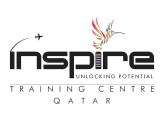Course Objectives
By the end of the training, participants will be able to:
- Apply ISO 55000 standards to create strategic asset management policies.
- Use risk-based maintenance (RBM) to prioritize critical assets.
- Set KPIs and service-level agreements for effective vendor performance.
- Evaluate asset lifecycle costs for informed decision-making.
- Lead asset management initiatives with cross-functional teams.
- Leverage technology and data to build value-driven asset management systems.
Training Program Outline
Module 1: Introduction to Asset Management
- Fundamentals of Asset Management (AM)
- Overview of ISO 55000
- Business Process & AM Landscape Model
- Strategic Framework: Vision, Policy, Goals
- Development of Strategic Asset Management Plans (SAMPs)
- Roles & Responsibilities in AM
Module 2: Asset Management Practices
- Core Concepts: Value, Leadership, Assurance, Alignment
- Risk Identification & Mitigation Strategies
- Business-level Risk Management
- Stakeholder Engagement Approaches
- Risk-Based Maintenance (RBM)
Module 3: Facilities Management (FM) Best Practices
- Sourcing and Outsourcing Approaches
- Procurement Best Practices
- Defining and Managing Service Levels & KPIs
- Vendor Performance Monitoring
- Third-Party Contractor Management
Module 4: Operations & Lifecycle Management
- Asset Lifecycle: From Demand Forecasting to Retirement
- Condition Monitoring & Systems Engineering
- Information & Configuration Management
- Lifecycle Costing (LCC) Analysis
Module 5: Strategy Implementation
- AM Assessment Tools (e.g., Maturity Models)
- Building and Leading AM Teams
- Behavioral Change Management
- Step-by-Step Asset Management Implementation
Module 6: AM Enablers & Decision-Making
- Enablers: Data, Technology, Culture
- Whole-Life Cycle Planning
- Operational and Financial Principles
- Value-Based Decision Making








